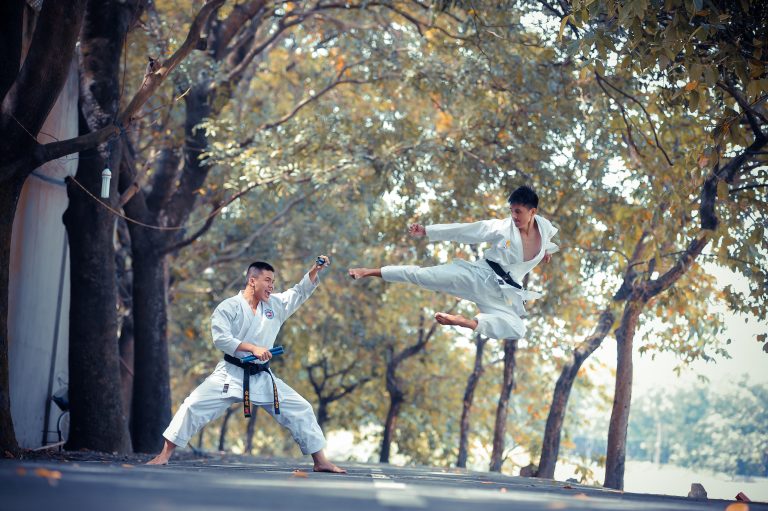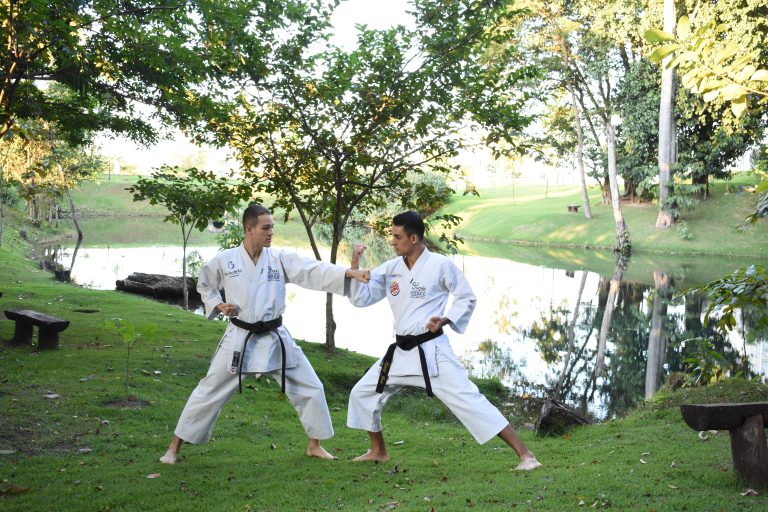Everything You Need to Know About Traditional Karate Belts
Have you ever watched a karate demonstration and been mesmerized by the various color belts that participants were wearing? Whether you’re a bystander or an aspiring karate student, you may be wondering: what are the differences between each type of karate belt? This article will answer that question and more as we dive into the history and significance of traditional karate belts.
The History of Karate Belts
The first use of colored belts in karate is credited to Jigoro Kano, the founder of judo. After observing how other martial arts disciplined their students through rank progression systems, Kano introduced a colored belt system to judo in the late 1880s. He then adapted this system to karate in the early 1900s, making it the most widely accepted rank progression system for martial arts around the world.
Going Through the Ranks
Karate belts in traditional martial arts fall into one of eight colors, each representing a different level of student achievement. Below is a list of common colors and their corresponding rank:
- White Belt: This is the first belt that is typically earned by a student. It signifies basic knowledge of karate and the beginning of their formal training.
- Yellow Belt: This belt is indicative of improvement in basic techniques and increased proficiency. Students receive this belt after mastering most simple moves and some more advanced moves.
- Orange Belt: The orange belt denotes further advancement in technique. Students receive this rank after becoming proficient in all simple and some advanced karate moves.
- Green Belt: After being tested on their technical skills and physical prowess, students receive the green belt. This belt signifies commitment towards improvement and expertise in many self-defense poses.
- Blue Belt: This belt is given to those who have achieved significant proficiency in self-defense, and have developed a solid foundation in all karate moves.
- Brown Belt: The brown belt signifies the highest level of technical expertise attained by a student before testing for a black belt. It requires intermediate to advanced skill in all karate moves.
- Black Belt: This is the most prestigious belt and requires advanced level knowledge of all fundamentals and techniqueswithin traditional karate.
What Comes After Black Belt?
For dedicated and committed martial arts practitioners, achieving the coveted black belt can open the door to further rank progression and mastery. Above black belt, there are various dan (pronounced “dahn”) levels that range from first-degree black belt to ninth-degree black belt. To move through these ranks, one must pass several tests that assess their longevity, knowledge, leadership, dedication, and proficiency with more complex techniques in karate.
Different Types of Karate Belt Styles
Karate belts typically feature a specific color scheme – white belts are often plain, while yellow, green, blue, brown, and black belts usually feature thin strips of other colors along either side. This striping style is often referred to as “hachi-mawari” (Japanese for “around the waist”) and reflects the commitment each student has to progressing through the ranks symbolically. Proper wear for each belt also differs depending on style – some emphasize the thin stripe along one side, others across the middle.
Another type of karate belt features Japanese “kanji” characters, which are written symbols representing ideas such as “Courage” or “Humility”. While these belts provide recognition for dedicated students who are respected within their style or dojo, this type of belt is generally not used as part of criteria for testing or promotion.
The Significance of Karate Belts
Traditional karate belts have a significant meaning that goes beyond just demonstrating rank within a style. Originally intended to be a source of motivation for martial artists to strive for excellence in technique and knowledge, these belts now also offer a source of pride and camaraderie within dojos across the world. For many students, each color represents hard work as they progress through each rank towards black belt and beyond.
To honor this important tradition, some dojos incorporate their own unique styles into color belts through different patterns or kanji characters embroidered into the fabric. As students strive for excellence day in and day out, these belts serve as a reminder to those who choose to take part in this challenging yet incredibly rewarding practice.
Conclusion
Traditional karate belts offer martial arts practitioners around the world a way to recognize their rank advancement within a style. After being introduced to karate by its founder Jigoro Kano in the early 1900s, colored belts became the most widely accepted form of rank progression in martial arts due to their symbolism of dedication, commitment and progress. From white through black, these different colored belts offer encouragement and pride to people who choose to embrace this fascinating practice – no matter what level they’ve reached on their own martial arts journey.
Everything You Need to Know About Traditional Karate Belts
Karate belts play a significant role in the martial arts discipline, as they not only indicate the rank of a karateka (a karate practitioner) but also serve as a motivating factor for advancing in the art. Belts are awarded to karatekas as they progress in their training, and each belt color represents a specific level of proficiency.
If you’re new to karate and have questions about the belts, this post covers everything you need to know about traditional karate belts.
1. What do karate belts represent?
Karate belts represent the skill level and rank of a karateka. In traditional karate, there are ten kyu (pre-dan) ranks and dan (black belt) ranks. The order of the belts from beginner to advanced is white, yellow, orange, green, blue, purple, brown, and black. The white belt denotes the starting rank, and the black belt represents the highest level of proficiency.
2. How do I earn a new karate belt?
To earn a new karate belt, one must take and pass a belt promotion test, which examines the karateka’s proficiency in the art. Different martial arts schools have various promotion systems and testing requirements. However, most karate schools require a minimum amount of training time and the mastery of specific techniques before allowing a student to test for the next belt rank.
3. How long does it take to earn a black belt in karate?
The time it takes to earn a black belt in karate varies widely depending on the school and the individual student’s dedication and training frequency. On average, it takes a dedicated student about three to five years of regular training to earn a black belt in karate.
4. Can I skip belts in karate?
Skipping belts in karate is generally not allowed in traditional karate schools. To advance to the next rank, one must complete the requirements of the previous belt rank, including the number of classes, training hours, and specific techniques.
5. What is the significance of the black belt in karate?
The black belt in karate represents the highest level of proficiency a karateka can achieve. It is a great achievement in the martial arts world, as it signifies years of dedicated training and intense practice. Earning a black belt also means a student has mastered the basic techniques and has attained the ability to teach others.
6. Can I wear a black belt in other martial arts disciplines?
No. The black belt in karate is specific to that martial art, and wearing a black belt earned in karate in another martial arts discipline is considered disrespectful. The only exception is when a karateka earns a black belt in multiple martial arts disciplines.
7. Can I wash my karate belt?
Yes, you can wash your karate belt. However, washing your belt is a matter of personal preference, as some martial artists believe that the belt should not be washed as it may wash away the knowledge and experience accumulated while wearing it. If you choose to wash your belt, it is recommended that you hand wash it in cold water and avoid machine washing or drying.
8. Can I tie my karate belt in any way?
No. Tying your karate belt is done in a specific manner and follows a set of rules to maintain the traditional etiquette and respect for the art. A proper way to tie a karate belt is to fold the center of the belt, placing it on your stomach, and crossing the ends behind your back. From there, wrap the ends around your waist, bringing them back to the front, and tie a square knot.
9. Can I wear my karate belt outside of training?
No. Wearing a karate belt outside of training is generally considered disrespectful to the art and to the karate community. The only time it’s appropriate to wear a karate belt outside of a training environment is during a formal event or ceremony.
10. What is the meaning behind each belt color?
Each belt color in karate has a specific meaning, which represents the karateka’s level of proficiency and rank. Here’s a brief overview of what each color represents:
- White: Represents purity, innocence, and beginner’s mind.
- Yellow: Represents the dawn and the beginning of a journey.
- Orange: Represents enthusiasm and the sun’s warmth.
- Green: Represents growth, hope, and new beginnings.
- Blue: Represents the sky, loyalty, and stability.
- Purple: Represents wisdom and the level of excellence achieved.
- Brown: Represents the deep roots of a tree and the maturity gained through experience.
- Black: Represents mastery of the art and the ability to lead and teach others.
Conclusion
Karate belts hold significant meaning and are an essential aspect of traditional karate. As a karateka progresses through the ranks, earning each belt is a significant accomplishment and a symbol of their dedication and hard work. It is essential to understand the meaning and significance of each belt rank in karate, as it plays a vital role in the martial arts discipline.
Inhaltsverzeichnis






